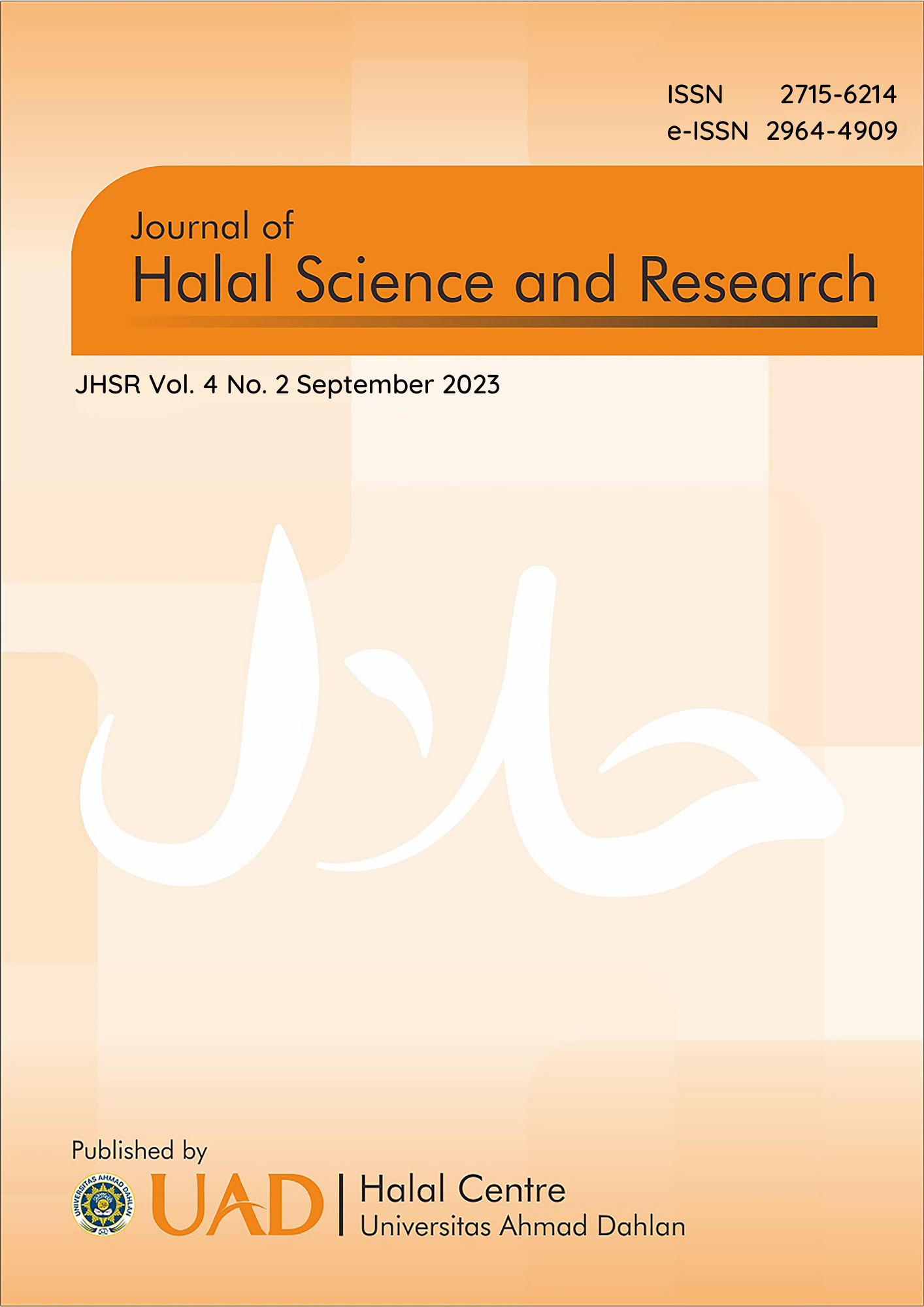Narrative review: a study of pork DNA analysis methods in food gelatin
DOI:
https://doi.org/10.12928/jhsr.v4i2.7798Abstract
Gelatin is a substance resulting from the partial hydrolysis of collagen consisting of animal cartilage, skin, and bones from water-soluble polypeptides. The problem formulation in this study is what DNA analysis methods can be used to detect pig DNA in food gelatin. This study aimed to collect, review, and conclude information regarding the most widely used DNA analysis method to detect pig DNA in food gelatin. From the results of the literature study, it can be concluded that the most widely used extraction method in the analysis of porcine DNA in food gelatin is the DNeasy® Mericon Food kit extraction method for good purity results, there is the foodproof® III Kit method, the universal Wizard KIT Promega®, the DNeasy® Mericon Food kit, and the Column based FavorPrep™ Food DNA Extraction Kit. The pig DNA analysis method is widely used in conventional PCR. Sensitivity, fast testing time, and gh acporcine gelatin sample was identified by the appearance of a band on the electrophoresis results.
Keywords: Food Gelatin, Extraction Method, DNA Analysis, Journal Review.
Downloads
Published
Issue
Section
License
Copyright (c) 2023 Universitas Ahmad Dahlan

This work is licensed under a Creative Commons Attribution-NonCommercial-ShareAlike 4.0 International License.
Authors who publish with JHSR (Journal of Halal Science and Research) agree to the following terms:
1. Authors retain the copyright and grant Universitas Ahmad Dahlan right of first publication with the work simultaneously licensed under a Creative Commons Attribution-NonCommercial-ShareAlike 4.0 License (CC BY-NC-SA 4.0) that allows others to share (copy and redistribute the material in any medium or format) and adapt (remix, transform, and build upon the material) the work for any purpose, even commercially with an acknowledgement of the work's authorship and initial publication in Universitas Ahmad Dahlan.
2. Authors are able to enter into separate, additional contractual arrangements for the non-exclusive distribution of the journal's published version of the work (e.g., post it to an institutional repository or publish it in a book), with an acknowledgement of its initial publication in Universitas Ahmad Dahlan.
3. Authors are permitted and encouraged to post their work online (e.g., in institutional repositories or on their website) prior to and during the submission process, as it can lead to productive exchanges, as well as earlier and greater citation of published work (See The Effect of Open Access).

This work is licensed under a Creative Commons Attribution-NonCommercial-ShareAlike 4.0 International License.




